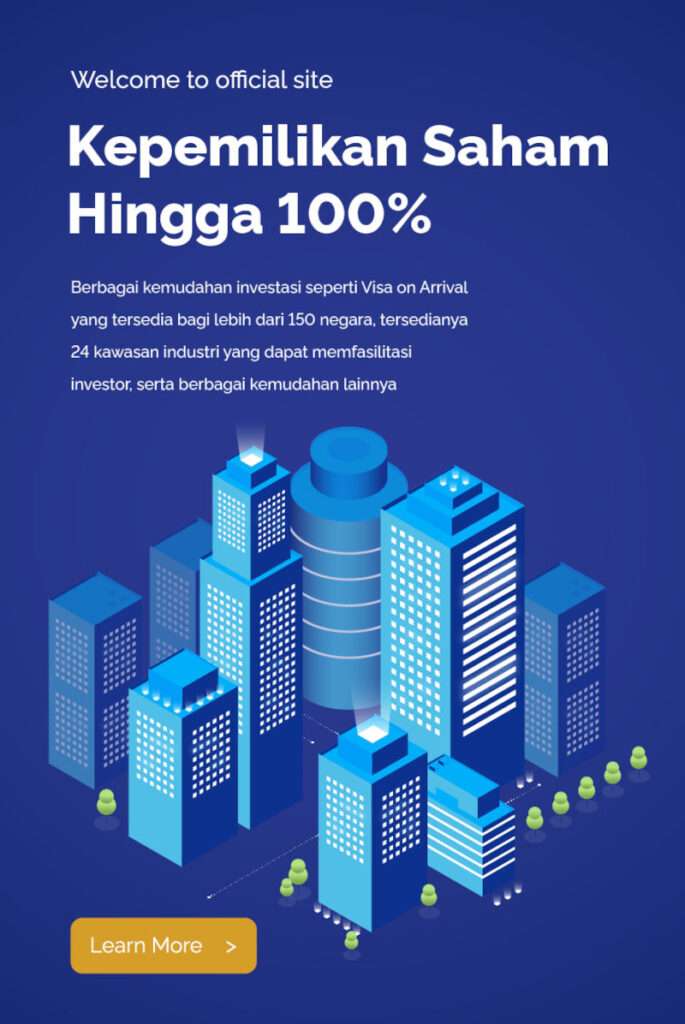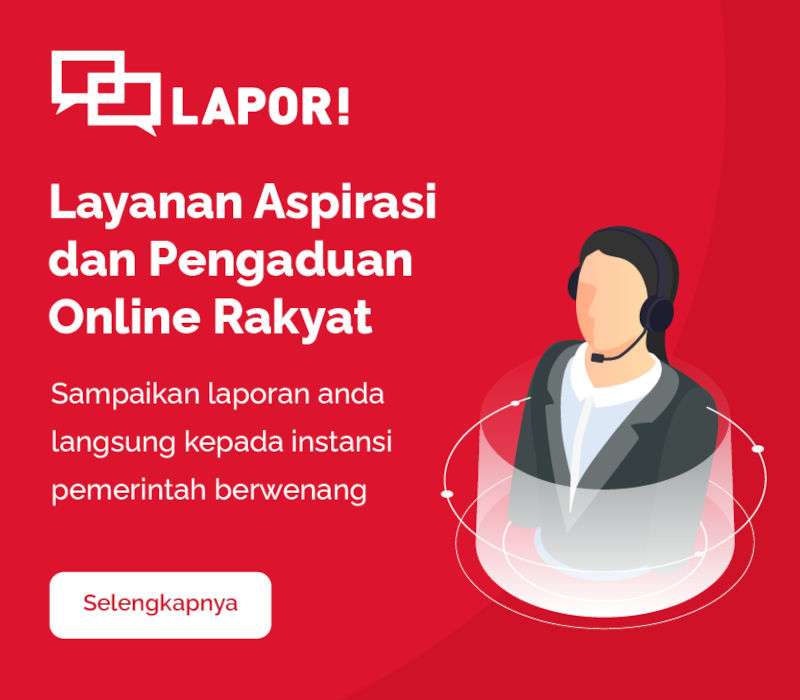Batam Development Footprint in the History of BP Batam
Geographically, Batam Island is strategically located. It lies on the Strait of Malacca international traffic trade route, which is the second busiest shipping route for global trade after the Dover Strait in England.
Its position is also very strategic, only 20 km or 12.5 nautical miles from Singapore, only 45-minutes by sea, and has easy access to other countries worldwide.
Batam Island is the largest island in the cluster of 329 islands making up the Riau Islands, with an area of 415 km2, equivalent to 67% the size of Singapore. With the aspiration to transform Batam into the driver of national development and the technological center of industrial development, the 3rd President of the Republic of Indonesia, who also happened to be the 3rd Chairman of Batam Authority, BJ Habibie, conceptualized Barelang (Batam Rempang Galang) connected by the 6 Barelang bridges to expand the area to 715 km2, or 13% larger than Singapore, so that Batam will be self sustaining and be able to compete with Singapore.
The development of Batam is inseparable from the role of President Soeharto. During the New Order government led by General Soeharto, who was last given the honorary rank of Five-Star General, from the start, prioritized economic development. Although the priority of economic development was focused on agriculture, President Soeharto also continued to pay attention to the industrial sector.
“In its later development, President Soeharto determined a group of islands that were included in the Riau Province at that time, named Batam. During his reign, President Soeharto was very concerned about the development of Batam. Batam has now become an attractive “industrial city.
In 1960, the capital of Riau Province was moved to Pekanbaru, which was previously located in Tanjung Pinang, and since then, Tanjung Pinang has officially become the capital of the Riau Islands Regency, which includes 17 sub-districts, including Batam Island which is within the scope of Pulau Buluh District.
Batam Island had a status as a village within the Buluh Island District, Belakang Padang in 1965. At that time, Batam Island was just a place that was not prioritized, with conditions that were no more than ahinterland island in the Riau Islands, far from the facilities and infrastructure it has today.
Now, Batam has grown rapidly with a population of nearly 1.3 million people, it is inconceivable that this city was once just acluster of swamps with a population of only about 6,000 people living on the coast.
Periodization of Batam Development
- 1971-1976
Ibnu Sutowo - 1976-1978
J.B. Sumarlin - 1978-1998
B.J Habibie - 1998
J.E. Habibie - 1998-2005
Ismeth Abdullah - 2005-2016
Mustofa Widjaja - 2016-2017
Hatanto Reksodipoetro - 2017-2018
Lukita Dinarsyah Tuwo - 2019
Edy Putra Irawady - 2019-Sekarang
Muhammad Rudi
-
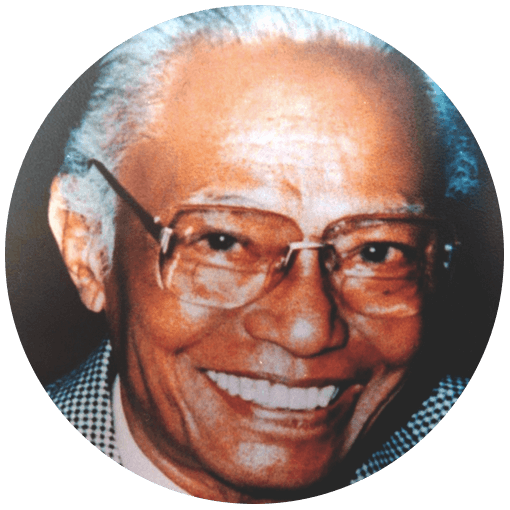
1. Ibnu Sutowo (1971 - 1976), Period of Preparation
Ibnu Sutowo is inseparable from Pertamina. During the reign of President Soeharto, Ibnu Sutowo, who was then the President Director of Pertamina and the Minister of Energy and Mineral Resources (EMR), was appointed the Chief of Batam Island Industrial Area Development Authority.
Before receiving special attention from President Soeharto, Batam was a dormant island with almost untouched jungle, with swampy thickets, inhibited by around 6,000 people who lived around the coast with fishing as their source of livelihood. He pioneered Batam Island as an industrial area and center of transhipment activities and made Batam the Logistics Base of Pertamina.
During Ibnu Sutowo’s leadership, Presidential Decree (Keppres) No. 41 of 1973 regarding the Batam Island Industrial Area, assigned the Batam Industrial Development Authority as the organization responsible for the development of growth in the Batam Island industrial area, with the power to allocate and use the land for the purpose of implementing the development of Batam as an industrial area.
The roles of Ibnu Sutowo in the Period of Preparation:
● President Soeharto issued Presidential Decree (Keppres) No. 74 regarding the Development of Building Batam Island into an Industrial Area on October 26, 1971,
● The issuance of Presidential Decree No. 74 of 1971 marks the birth of the Batam Authority, which has been celebrated yearly by the Batam Authority staff as the momentum of Batam Island Industrial Area Development Service Day, since 2008.
● Batam Authority 1972 Master Plan, the Concept of Free Trade Zone was planned
● The location of port infrastructure was set,
● Airport construction (850 m),
● Seaport (Sekupang 140 M, Batu Ampar 1 KM),
● Reservoir construction (Sei Harapan, Baloi, Nongsa),
● Provision of electricity, telecommunication, road construction, housing (for Pertamina at that time).
In 1974, during the leadership of Ibnu Sutowo, the construction project of the airport in Batam Island commenced. The initial plan was for it to be located in Tanjung Uncang, but it was moved to Batu Besar due to international flight regulations.
Meanwhile, to fulfill the demand for clean water in Batam Island, which had no water resources of its own, reservoirs were needed to catch rain water, which would consequently be processed into clean water. The first reservoir, Sei Harapan Reservoir, was built in 1969 by Robin Loh, and was operational in 1979.
The construction of a source of energy started when Pertamina built power plants in Sekupang and Batu Ampar. In the meantime, to support transportation, road construction from Sekupang to Batu Besar was started.
-
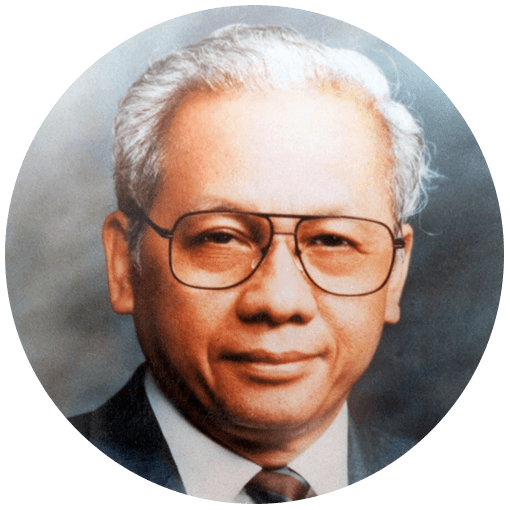
2. J.B. Sumarlin (1976-1978), Period of Consolidation
When Pertamina was in the midst of crisis, J.B. Sumarlin, who was then the Minister of Administrative Reform, Deputy Chairman of the National Development Planning Organization (Bappenas) and Chairman of Opstib, was assigned by President Soeharto to be the second Chief of the Batam Authority. He helped transform Batam into a Bonded Warehouse Area and gave the Batam Authority the authority to manage ports.
During J.B. Sumarlin's term, the second reservoir, Sei Baloi Reservoir, was built in 1975 by Kurnia Dwi Putera LLC and was operational in 1978. Development continued with the construction of Nongsa Reservoir in 1975 and was operational in 1980.
Along with the implementation of Batam development in accordance to the 1972 Master Plan, supported by the designation of Batam as an industrial area under Presidential Decree No. 41 of 1973, a number of foreign companies (investors) began to take an interest in investing in Batam. According to the records, 9 companies invested and 9 other companies showed an interest in investing in Batam at that time.
The role of J.B. Sumarlin in the Consolidation Period
● Collected information on obstacles and determined the continuation of the Batam project, and it was decided that the development of Batam should proceed using APBN (the National Revenue and Expense Budget), whereas formerly Pertamina's budget was used;
● In this era, there was the delegation of authority to manage the sea ports in Batam Island by the Indonesian Department of Transportation the to Batam Authority;
-
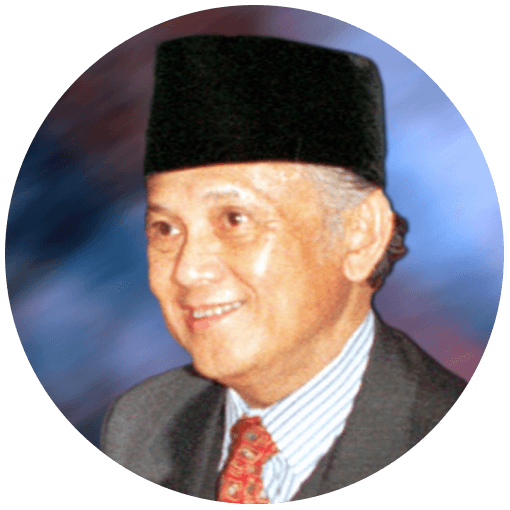
3. B.J. Habibie (1978 - 1998), Period of Infrastructure Construction and Investment
During the next developmental period, President Soeharto saw the need for Batam to develop into a technologically advanced industrial area. To actualize this, President Soeharto assigned B.J. Habibie, who was, at that time, the Minister for Research and Technology, to develop Batam as the Chief of the Batam Island Industrial Area Development Authority in 1978.
Under his leadership, B.J. Habibie was able to make Batam grow rapidly. B.J. Habibie changed the direction of Batam's development from a logistics base for Pertamina, into a national project with high added value for the national interest by evolving Batam Island into an area of high-tech industries, trade, transhipment, and tourism.
Habibie provided quality materials for infrastructure development, promoted marketing and cooperation with entities abroad to invest in Batam Island, and built infrastructure and facilities to support and attract investors. He also initiated the establishment of the Batam City Administration in an effort to provide better services to the ever expanding community.
Finally, President Soeharto's special attention and actions led Batam to its success as a competitive Industrial Zone. Batam became a proof of the success of the New Order Government. B.J. Habibie focused on export-oriented industries with skilled personnel, low water consumption, intermediate to advanced technology, and are environmentally friendly.
The development theory of Batam construction was formulated by Habibie, taking the Benelux Theory (Belgium, Netherland, Luxemburg) of Europe and using it to form SiJoRi (Singapore, Johor, Riau), and B.J. Habibie’s Balloon Theory, a theory which illustrates the economic conditions of an area as a balloon system inter-connected through valves (infrastructure and facilities). Batam being Balloon I , Rempang as Balloon II, and Galang as Balloon III.
Habibie also formed the agency, BKPM (Investment Coordinating Board). During the leadership of B.J. Habibie, the revenue from UWTO (land leased to the Batam Authority) was utilized as wide as possible for the capital for the Batam Authority to prepare and to build basic infrastructures.
The Central Government granted the Batam Authority the Land Management Rights (HPL) to manage land in Batam through Presidential Decree (Keppres) No. 41 of Year 1973. This was to be used in the planning, designation, and use by the Batam Authority in developing Batam.
At that time, President Soeharto wanted to develop Batam to relieve Indonesia from its dependence on Malaysia (Singapore was still part of Malaysia at that time). It was felt that the exports and imports of Indonesia was overdependent on Malaysia / Singapore at that time, and did not best fit the ideals of Indonesia. Therefore, Batam was seen as a way to break away from this dependence.
The Government set Batam as an example for the development of other industrial regions around the country. The development of Batam into a high-tech based industrial zone was essential in terms of developing a strong national economy supported by a solid agricultural sector.
Soeharto said, “Batam has a highly significant strategic value. If we don't utilize and prioritize it, it is as if we aren’t grateful for what God has given us."
Soeharto, who was known for possessing forethought, was able to move forward the government revival which raised Indonesia as one of the “Asian Tigers” in the ‘90s. Soeharto set about guiding the new Indonesia-Singapore relations.
The crucial decision made by President Soeharto was in choosing the right person to further the development in Batam, which culminated in appointing Bacharuddin Jusuf Habibie, also known as B.J. Habibie, who was born in Pare Pare, South Sulawesi, on June 25, 1936.
B.J. Habibie had a distinctive style in implementing his leadership. He held a belief that the overall quality of work is determined by the quality of its every detailed execution. In order to create reliable cadres, he had two principles. First, learn and master the theory. Second, gain expertise through specialization. This was the principle he applied in the construction of the Barelang bridge.
He provided the opportunity for this nation's sons and daughters to apply their knowledge in building six inter-island bridges, which had never been done before in Indonesia. One of them was a cable stayed bridge connecting Batam Island and Tonton Island. The different bridge type selections were also intended to provide a reference and experience in the technology of bridge construction, and at the same time functioned as a laboratory.
A number of large industrial estates started to be built in Batam. Singapore has invested quite a large sum of capital, with the birth of Batamindo in Muka Kuning, which is pouplated with company factories such as Sumitomo, Thomson, Philips, Western Digital, Sony and Toshiba. This industrial development also opened up opportunities in various job fields, stimulated investment flow, drove the increase in the export sector and the emergence of similar areas in Batam, such as Kabil Industrial Estate LLC, Kara Primanusa LLC, Seafront Industrial City LLC, Spinindo Mitradaya LLC, etc.
● B.J. Habibie suggested the establishment of the local government which handles demography and social administration issues; ● Batam Administrative Municipality was officially established on December 24, 1983 (Government Regulation No. 34 of 1983); ● Presidential Decree No. 7 of 1984 regarding the work relations between the Batam Authority and the Batam Municipal Government.
Government Administration Batam Island has brought many changes to local government. Beginning in the 1980s, the population growth has increased as the result of the rapid development of the Batam Island industrial area, by natural means and by the increase in population from both the formal and informal workforce. In parallel, demand in obtaining government administration service facilities needed by the community has also increased. In line with these developments, a special arrangement is needed to regulate government functions.
"To realize this special arrangement, the Batam Authority proposes the existence of an institution that handles government administration through the establishment of the Batam Municipality in the form of a Regional Government, which holds the status of Administrative Municipality led by the Mayor."
To carry out the government administration in accordance with Article 17 of Government Regulation No. 34 of 1983, the Government issued Presidential Decree No. 7 of 1984 regarding the Working Relationship between the Batam Municipality and the Batam Island Industrial Area Development Authority.
The Mayor of Batam, along with the Batam Island Industrial Area Development Authority, periodically hold coordination meetings with other agencies to synchronize the implementation of Batam construction and development programs.
Ir. H. Raja Usman Draman was appointed the first Mayor of Batam (1984–1989). Then, form October 1989–1999, Drs. R.A. Aziz was appointed the second Mayor of Batam. The existence of the Administrative Municipality does not imply the existence of a different region within the country. It is merely a task division. This is intended to improve government administration and public services for the community and to support the Batam Authority in smoothing out development.
President Soeharto: “Having a Mayor does not mean that the development of Batam Island is then transferred to the Mayor. This was impossible, even handing it over to the Governor was impossible. This is clear. Therefore, I ask either the Minister of Home Affairs or the Mayor to assist the Batam Authority in developing the Batam Island Project.”
The Land Sector From the beginning the Government of Indonesia has given BP Batam the authority to manage the land in Batam Island through Presidential Decree No. 41 Year 1973 regarding Batam Island Industrial Area. This was intended for land planning, allocation and use in accordance with the implementation of the Batam Authority’s duties in Batam's development.
The Land Management Rights (HPL) granted to the Batam Authority were in accordance with Presidential Decree (Keppres) No. 41 of 1973 regarding the Batam Island Industrial Area dated November 22, 1973. During the leadership of B.J. Habibie, UWTO (land lease to Batam Authority) revenue was utilized as wide as possible as capital for the Batam Authority in providing for and the building of basic infrastructure. The availability of infrastructure became the main appeal in attracting the widest array of investors.
Concerning social community development, B.J. Habibie wanted residents entering Batam to possess expertise in technological fields needed by the industries in Batam Island.
Habibie: “Batam will export high-tech, high value products to help earn foreign exchange. Batam is not for itself, but for the Nation. It is impossible for us to open Batam Island for just any of its residents to clear lands, cut trees, only to plant vegetables. Batam Island is not for vegetable gardens."
To serve the flow of passengers and goods by air, the construction plan for the airport in Batam took both cargo and passenger transportation into account. The Batam Authority commenced construction of Hang Nadim Airport in 1996.
Barelang Bridge Construction Bridge I (Teungku Fisabilillah): connects Batam Island and Tonton Island with a cable stayed bridge. It is currently the longest bridge designed and built in Indonesia.
Bridge II (Nara Singa II): is a Balance Cantilever Box Girder bridge, the longest Single Box bridge in Indonesia connecting Tonton Island and Nipah Island.
Bridge III (Raja Ali Haji): a Segmental Concrete Box Girder bridge with Abutment Foundation, connecting Nipah Island and Setokok Island.
Bridge IV (Sultan Zainal Abidin): is a bridge connecting Setokok Island and Rempang Island. It is the second longest Balance Cantilever bridge built in Indonesia.
Bridge V (Tuanku Tambusai): connects Rempang Island and Galang Island. It is the first and the longest arch bridge with constructed reinforced concrete built in Indonesia.
Bridge VI (Raja Kecil): the connecting bridge between Galang Island and Galang Baru with a length of 180 m and a width of 18 m. It uses a system where each 45 m prestressed concrete double box segment lays on 2 footings. With Rempang and Galang interconnected, the two islands are expected to be an alternative for new industrial development to accommodate the expansion from Batam.
-
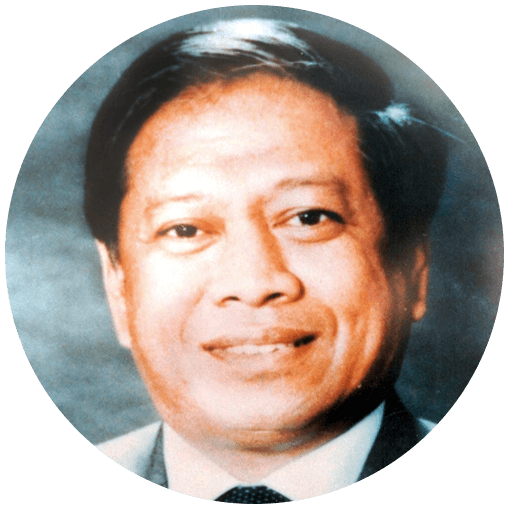
4. J.E. Habibie (B.J. Habibie's younger brother) (March 1998—July 1998), Period of Continuation
B.J. Habibie left his position as the Chief of the Batam Authority upon being elected by the MPR (People's Consultative Assembly) of the Republic of Indonesia (RI) as the 7th Vice President of Indonesia. J.E. Habibie did not serve for long. He resigned when B.J. Habibie was appointed the 3rd President of Indonesia. The purpose of his resignation was to protect his older brother from accusations of corruption, collusion, and/or nepotism (KKN).
Though brief, he still made his mark in KKN eradication, sea sand mining reform, moving the main office of the Batam Authority from Jakarta to Batam , and organizational restructuring.
-

5. Ismeth Abdullah (1998-2005), Period of Infrastructure and Facilities Development and Continued Investment with Greater Attention to Community Welfare and Improvement of the Investment Climate.
The challenge faced in this era was Regional Autonomy, which gave birth to the Batam City Government in the Batam free trade and free port zone (Law 53/1999). Thanks to his efforts to keep the Batam Authority involved in government administration, the articles of this law also mandate that the working relations between the City Government and the Batam Authority are further stipulated in Government Regulations which are yet to be formalized. His tenure prioritized the development of urban facilities, such as religious facilities, sports, housing, government facilities and public facilities.
Development Priorities and Leadership Orientation:
Batam Investment Development Cooperative and SME Training One In One Out System Implementation on Car Import Batam FTZ Commitment Formation Effort Community Welfare Social Facilities Construction Batam Intelligent Island Development
-
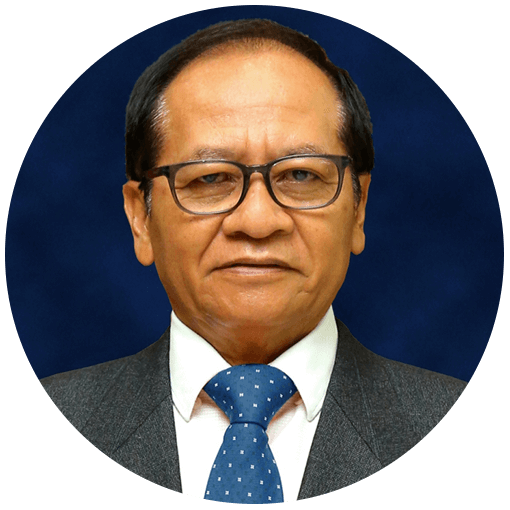
6. Mustofa Widjaja (2005—2016), Period of Batam Development with Emphasis on Infrastructure and Facilities Improvement, Investment and Living Environment Quality.
His main accomplishment was in obtaining the Batam Authority clear institutional status through the issuance of the Batam Free Trade and Free Port Law, as well as Government Regulation No. 5 of 2011. In the midst of the Batam Authority's transition to BP Batam, Mustofa Widjaja successfully convinced the public and the communities that the existence of BP Batam remained important and indispensable. indispensable.
Development Priorities and Leadership Orientation:
FTZ Officiation by the issuance of Law 44/2007 Regional Council Formation Conversion of the Batam Authority to the Batam Indonesia Free Zone Authority (BP Batam)
(Government Regulation 46/2007 was changed to Government Regulation 5/2011)
● BP Batam as a Public Service Agency (BLU) may find and manage its own budget (PP 6/2011) ● Actualized E-Government ● BP Batam Central Library ● Mapping of Batam 2011—2015 Development Journey ● Effort of Batam in Transhipment
-
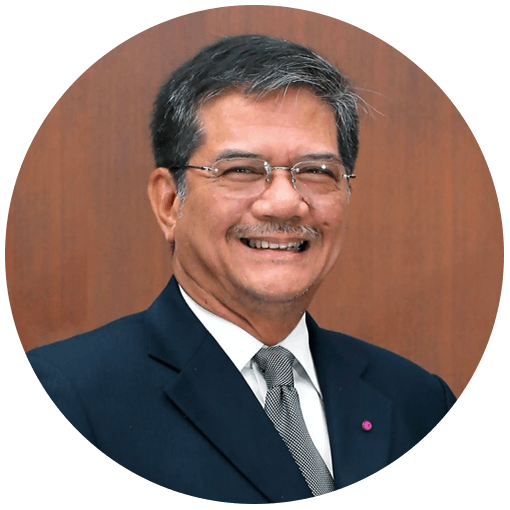
7. Hatanto Reksodipoetro (2016—2017), Period of Batam Free Trade and Free Port Zone Performance Enhancement with real work towards an area with international competitiveness.
Hatanto Reksodipoetro, revitalized a number of systems that were previously performed manually, in person, which potentially caused moral difficulties. He converted the whole system online. He was also optimistic regarding a number of breakthroughs made by BP Batam and the transfering of all services used by investors from manual to online; such as i23J and KILK, which are still popular among investors, in addition to other facilities and services, such as the Host to Host Online Port Licensing System and Geographical Information System (GIS) for land management using drone mapping, like in Singapore.
-
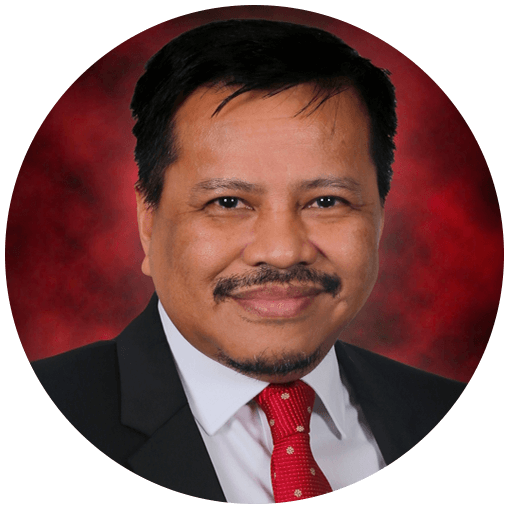
8. Lukita Dinarsyah Tuwo (2017—2018), Period of Reformation and BP Batam Performance Enhancement to Actualize the Development of An Advanced, Just, and Sustainable Batam for the Unitary State of the Republic of Indonesia.
Under the leadership of Lukita Dinarsyah Tuwo, BP Batam Served with Integrity, Transparency and Humility. BP Batam was closer and more present in the community.
Through priority programs of increasing Investment, Tourism, Industrial and Digital Economy Improvement, Logistics Center Development, cooperation with the Batam City Government and other organizations, the economic growth of Batam continued to increase by 4.51% in the second quarter of 2018 after plunging to a low of 1.06% in the second quarter of 2017.
The priority programs were quickly initiated by Lukita and his staff to actualize Forward Batam in which its economy grew 7% in 2 years. Under the leadership of Lukita Dinarsyah Tuwo, BP Batam was able to achieve 2nd place in the National Public Information Disclosure for Non-Structural Institutions Category from the Central Information Commission (KIP) in December 2017.
Priority programs to increase foreign tourism were created, including BP Batam holding the 2017 Barelang Marathon, 2017 BP Batam International Culture Carnival, and the BP Batam Car Free Day and Car Free Night at the end of 2017.
At the end of January 2018, together with all SKPD (Local Government Work Units) and stakeholders and community leaders of Batam, the Head of BP Batam announced the 100 days of work achievements by BP Batam.
On this occasion, the Head of BP Batam conveyed the work program of BP Batam called the Batam Forward United 2 Years 7% Economic Growth (BBM27).
In the spirit of promoting tourism, investment and improving services in Batam City, BP Batam held the 2018 Car Free Night and the BP Batam Ambassador Award Night, as well as the 2018 Batam Economic Forum Car Free Night which was packaged with Zumba Color Night and Culinary Markets, along with Batam Menari (Batam Dancing) which broke the Indonesia World Records Museum (MURI) record with the most participants performing the Batam Rampai Dance, with 22,000 dancers.
Along with the former, in order to actualize the Kampung Tua Tanjung Uma area, the Head of BP Batam was also present at the Announcement and First Painting activities of the Rainbow Colored Tanjung Uma at 200 local residents' houses.
BP Batam made remarkable achievements, including the One Stop Integrated Service (PTSP) which received ISO 9001: 2015 Certification and reception of an award as the Best Video Profile for non-structural institutions at the Awards Night of The 3rd Public Relations Indonesia Awards (PRIA), Surabaya; The 2018 Top BUMD (Municipally Owned Corporation) Builder Award by Business News Indonesia Magazine and Asia Business Research Center.
In addition, PTSP (One Stop Integrated Service) of BP Batam was successful in being nominated in the Top 10 2018 BKPM (Investment Coordinating Board) Investment Assessment Award and received the Unqualified (WTP) Assessment Opinion Award for the second time from the Audit Board of the Republic of Indonesia.
Positive synergy with stakeholders continues to be built in Batam's development. The Head of BP Batam implemented the MoU by handing over 5 BP Batam assets to Batam City Government. He also collaborated in drug trafficking prevention by signing a Memorandum of Understanding between BP Batam and the National Narcotics Agency of the Republic of Indonesia. Collaborated with Kepri (Riau Islands) Provincial Prosecutor Office in the implementation of Civil Law and signed an MoU with the Republic of Indonesia Coast Guard.
In July, BP Batam held a special forum with businesspeople and analyzed and responded to the economic growth of Batam in Quarter I / 2018. The Head of BP Batam gave an explanation of the year-on-year increase in Quarter I / 2018 which reached 4.47% after previously being at 1.04% in the same quarter of 2017.
In August 2018, Indonesia Funtastic Diversity - Batam for Indonesia broke the second MURI (Indonesia World Records Museum) record by making the 73-meter longest Jala (Net) Bread in conjunction with the 73rd Anniversary of the Republic of Indonesia.
-
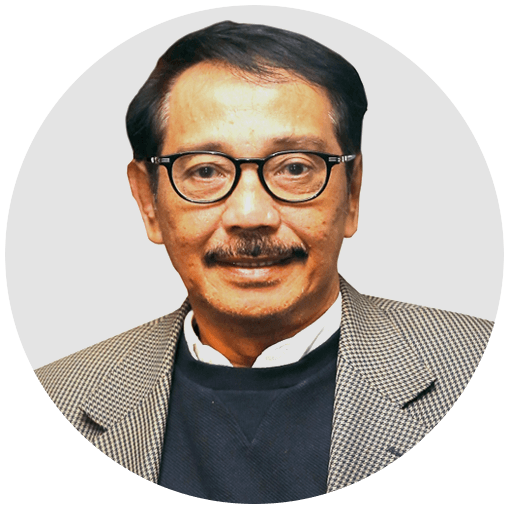
9. Edy Putra Irawady (2019), Reformation Transition Period and BP Batam Performance Enhancement, to Actualize the Development of an Advanced, Just, and Sustainable Batam for the Unitary State of the Republic of Indonesia.
Edy Putra Irawady was appointed by the Coordinating Minister for Economic Affairs as the Head of BP Batam in the Transition Period to carry out three major duties, to Merge Business Processes into the PTSP (One Stop Integrated Service), to formulate the Job Description of the Head of BP Batam which will be the Mayor of Batam in the future, and to Report the Investment Development in Batam City.
To fulfill his duties, Edy immediately renewed the integrated business licensing system, previously known as the Online Single Submission (OSS), renamed the Indonesia Batam Online Single Submission (IBOSS). The synchronization of licensing services was implemented based on the coordination between PTSP BP Batam (BP Batam One Stop Integrated Service), DPMPTSP Pemko Batam (Batam City Government Investment and One Stop Integrated Service Agency) and other related agencies.
Edy also empowered frontliners to improve the ease of investment licensing services by forming the Business Clinic, which was tasked with providing investment-related consultations and case settlement services. In addition, Edy also formed the Investment Guard and Blink, a mobile investment services unit.
Under the leadership of Edy Putra Irawady, BP Batam has requested support from the Regional Council and BKPM (Investment Coordinating Board) in integrating licensing services into the OSS (Online Single Submission) system to accelerate investment in Batam City.
In the first semester of 2019, foreign investment increased by 53% in comparison to the same period in 2018, and the planned investment speed in Batam City during January-December 2019 reached 73% compared to the average national investment speed of 32% over the previous 5 years.
-

10. Muhammad Rudi (2019—now).
Muhammad Rudi, who is the Mayor of Batam, also serves as the Head of BP Batam after being assigned and inaugurated by the Coordinating Minister for Economic Affairs in September 2019. During Muhammad Rudi's leadership, BP Batam has focused on ease of licensing for the public and investors and increasing investment in Batam. One of the ways in which the ease of licensing has been enhanced is by the cutting of the lengthy bureaucratic system.
The development of the Special Economic Zones (SEZ) in Batam City such as the SEZ Maintenance, Repair, and Overhaul (MRO), a collaboration between Lion Group and Garuda Indonesia, and Digital SEZ in Nongsa Digital Park are some of the tasks performed by BP Batam under the leadership of Muhammad Rudi. Infrastructure developments, such as airports and sea ports have also become main focuses of Muhammad Rudi in leading BP Batam.
Furthermore, Muhammad Rudi has also targeted revenue optimization through assets owned by BP Batam by forming four Business Entities, Airport and ICT, Ports, Hospitals, and Facilities and Environment. With the formation of these four Business Entities, the focus of BP Batam is expected to increase infrastructure development to increase investment and provide various facilities for the people of Batam City.

